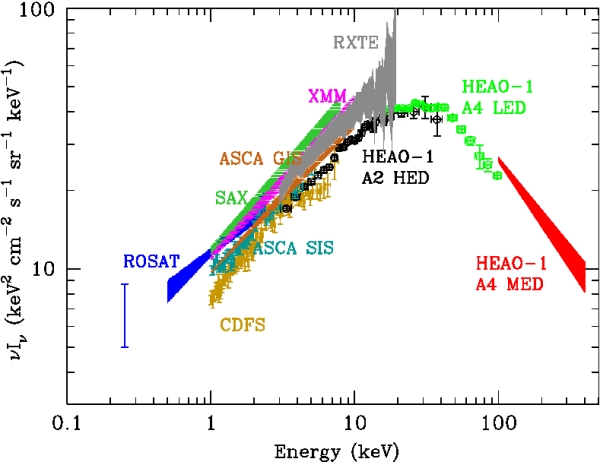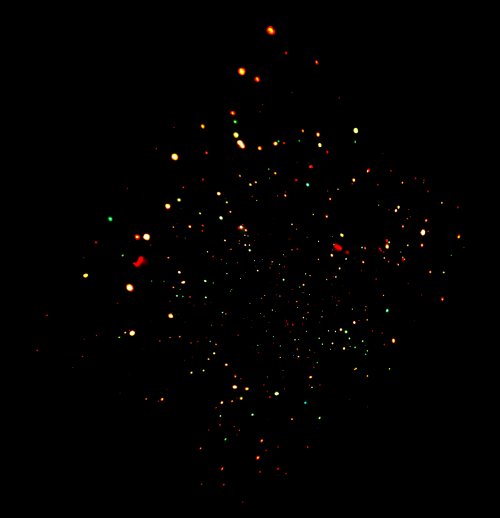
The cosmic X-ray background (XRB) was discovered in 1962 using sensitive rocket-launched Geiger counters intended to study 1.5-6.2keV X-rays from the lunar surface, but unexpectedly detected the first galactic X-ray source, Sco X-1, as well a diffuse background of emission from the whole sky. Even though this was two years before the discovery of the cosmic microwave background (CMB), it took almost 30 years before the origin of the XRB could be explained satisfactorily.
Even after subtraction of all possible local effects there was still a truly uniformly distributed component which suggested that its origin was extra-galactic. A variety of balloon, rocket and space-borne experiments to measure the XRB spectrum followed throughout the 1960s and 1970s but amongst the best were the were those aboard the High Energy Astronomical Observatory (HEAO), which was launched in 1977.
 |
| The shape of X-ray Background as measured by different satellites of the the last few decades. |
The result of these missions was that the spectrum of the XRB was well determined. However the cause of this emission was still a mystery. The assumption was that the XRB was made up from X-rays from Active Galactic Nuclei which were not bright enough to be detected as sources in the instruments. The EINSTEIN, summing the sources it detected managed to account for 40% of the XRB.
In the current era of X-ray astronomy the CHANDRA Satellite has taken two deep images of the X-ray sky - the Chandra Deep Fields North and South (23 and 11 day exposures respectively); and the XMM-NEWTON Satellite has taken a 9 day exposure of the Lockman Hole area of the sky. Work carried out in this department showed that these three surveys have managed to resolve most of the soft X-ray emission, but there is still a large fraction of the hard band missing. With the depth of these images, it is likely that the sources exist within the "survey volume" - the region of space that would be accessible in such long exposures; rather than they are rare and have been missed, or are extremely distant.
 |
| The CHANDRA Deep Field North - the deepest X-ray image to date. Except for two clusters of galaxies, the amorphous red blobs, the majority of the X-rays are emitted from material swirling around a Super Massive Black Hole at the centre of a galaxy. |
The spectrum of these "missing" sources required to produce the shape of the XRB are very dust enshrouded, and so only the very energetic X-rays escape to reach the detectors in Earth orbit.
BACK: AGN - Jets UP: X-ray Research Topics NEXT: Links
Thanks to Matthew Worsley for help with this page.
Published 1996-2005 by the Institute of Astronomy X-Ray Group. Last Modified on 2005-04-28. Comments to the xray-webmaster at ast.cam.ac.uk.